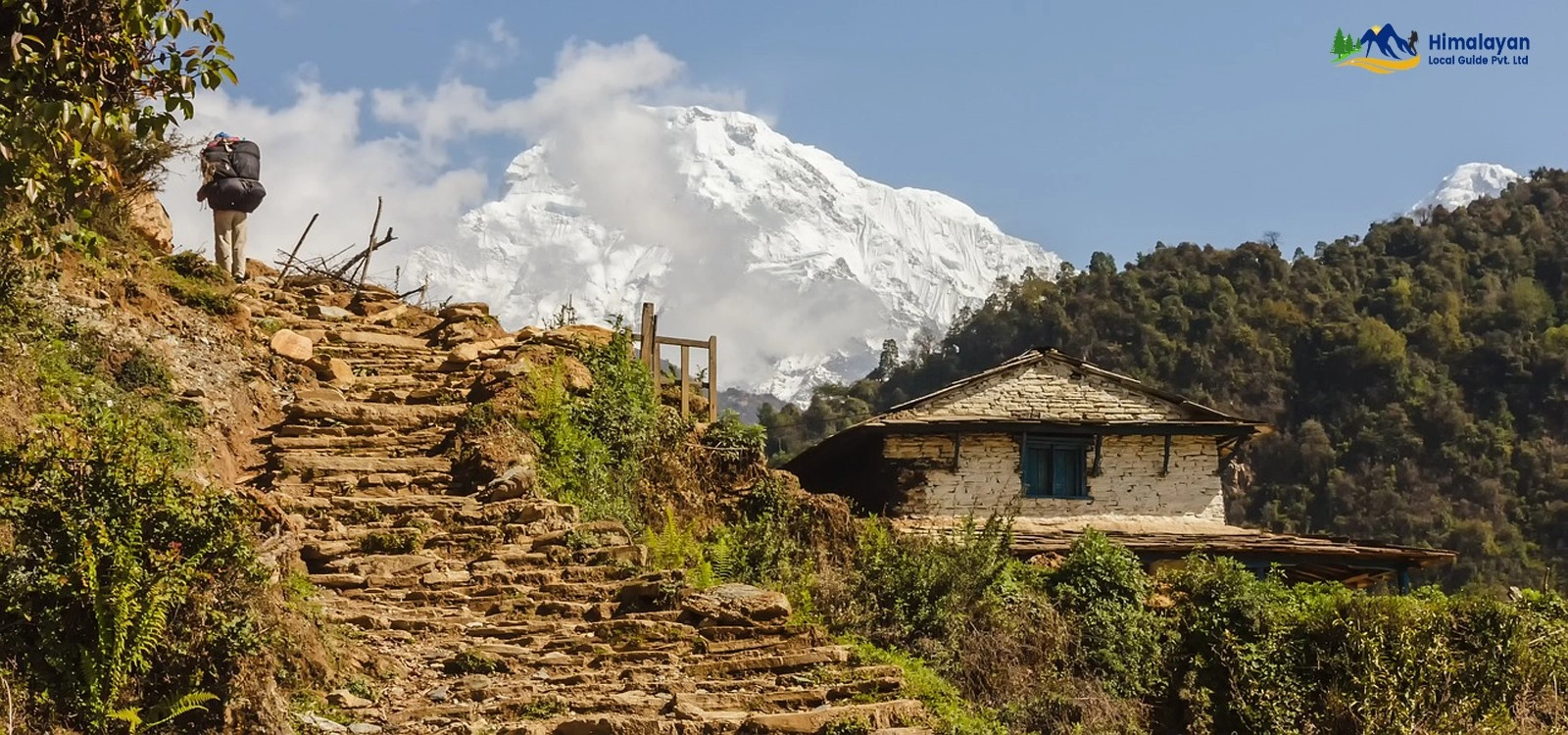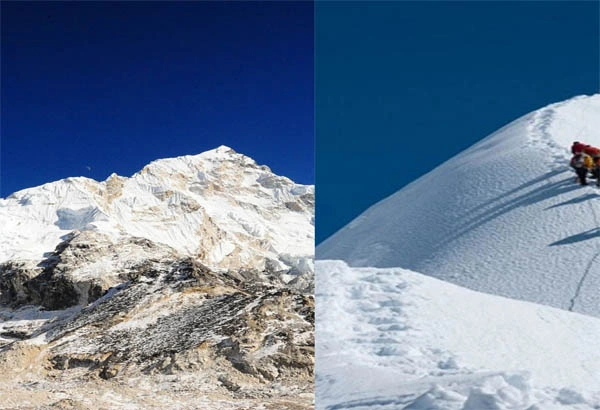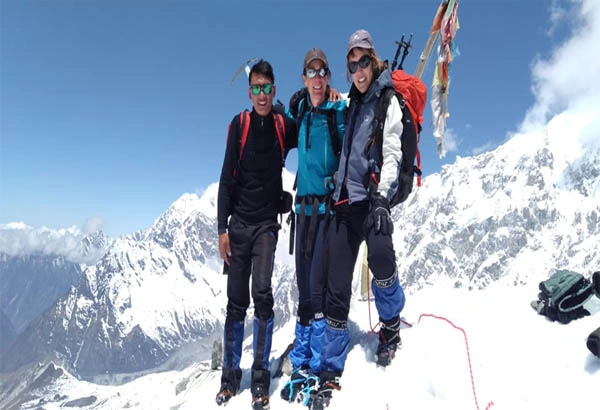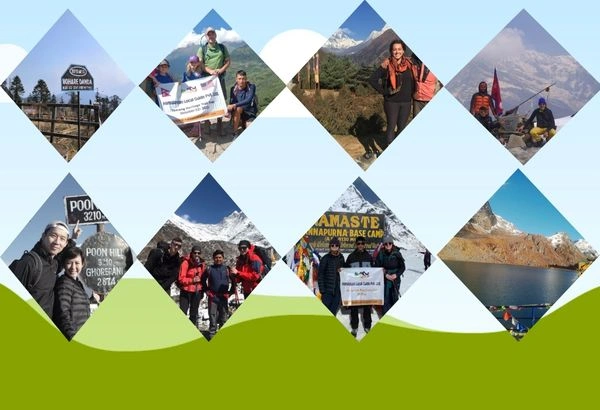Ghandruk Village: A typical cultural haven in the Annapurna Sanctuary region
Ghandruk village is located at (1945meters/6,381feet) above sea level, inside the Annapurna region in the Kaski District of the Gandaki Province of Nepal. The Ghandruk village is a cultural gem that offers trekkers a unique combination of natural attractiveness and rich tradition.
It is strategically situated on a hillside with eye-catching views of the surrounding by whole mountain peaks, making it a must-visit purpose for travelers/trekkers and culture enthusiasts. Most of the trekkers spend a night at Ghandruk village as they trek in the Annapurna region, mostly Ghorepani Poon Hill, Annapurna Base Camp, and Annapurna round trek.
Locality, History, and Lifestyle of Gurung peoples at Ghandruk Ghaun:
Historians consider Mongolians through Tibet entered Nepal and built their settlement at Ghandruk. Historically, Ghandruk village has served as a vital stop on the antique trading route between Nepal and Tibet. This village has a rich history of Gorkha soldiers who bravely served in the British and Indian armies, earning status for their courage and resilience.
Ghandruk lies on the western slope of the Annapurna area between Lumle and Dangsing villages. The mountain views like; Dhaulagiri, Nilgiri, Annapurna South, Hiuchuli, Gangapurna, and Machhapuchhare.
Ghandruk village is astonishingly reachable. A regular bus leaves for Ghandruk from Pokhara Valley every hour. The distance from Nayapul to Ghandruk is around 18km. You can trek for approximately 5 to 6 hours to reach Ghandruk from Nayapul.
The town is populated by the Gurungs, well-known for their distinct culture, traditions, and hospitality. However other castes also including Poon Magars, Chetrries, and Kamis live there.
In this village, you will find several facilities with at least one of their members recruited in the British, Indian, Singapore, and Nepal Army. However, there are still families who earn their living from agricultural activities.
In most of the hillsides of Nepal, the farmlands in Ghandruk are terraced and farmers grow rice, barley, millet, vegetables, buckwheat, potatoes etc.
Cultural:
Ghandruk has massive cultural significance as a living Gurung Heritage site. The village is decorated with traditional Gurung Houses, often built with Stone and featuring intricately carved wooden windows and doors. Travelers can immerse themselves in the local culture by joining local culture programs, observing traditional dances, and learning about Gurung societies and customs.
The Gurungs village of Ghandruk is famous for its workmanship, mostly in knitting and handicrafts. You can observe women competently weaving intricate patterns on traditional looms, creating good-looking handmade clothes that reproduce their exciting culture.
The Houses of Ghandruk were built setting stone and mud, the village is covered with stones and you can observe the nearby green vegetable fields that supply vegetarians to the restaurants and city.
One of the important characteristics of Gurungs is their dense housing, built mostly of stone slabs, wood, and mud. The flat roofs of slate. Most of the Gurung Houses are two stories and have four-sided shapes.
According to the latest guesses, more than fifty hotels in this village, with a capacity of about 1100 to 1200 people. While most villages in Nepal are getting abandoned as youths pursue employment away, Ghandruk is among the few exceptions that have seen a population rise due to the tourism chances Ghandruk provides.
For Gurung Male:
In terms of Gurung cultural dress, the man of Gurung wear includes; Bhangra, Raadi, Bhoto, Kalo Topi, kalo Istakot, bellt, and Khukhuri.
For females:
The women (Gurungni) wear a blouse that is tied at the front and a lungi, Mugiya, Jari, Makhamali Cholo, Patuka, Ghalek, Tilari, Jantar, Riban, Chura, and Naugedi etc.
Gurungs also take music seriously and incorporate music into their while festivals or wedding times. Gurung people have their dances, and "Rodhi" which you can see in Ghandruk Ghaun, is a Gurung one. The Rodhi is a public place where men and women meet to sing and dance.
Permits necessary:
To explore the Ghandruk Ghaun, you need the type of essential permits the (ACAP) Annapurna Conservation Area Project Permit and (TIMS) Trekkers Information Management System Card.
The entry fee for the ACAP permits depends on your nationality for a SAARC Country 1,000 NPR and for another foreign country 3,000 NPR to obtain this permit. You can obtain the ACAP permit from the Nepal Tourism Board office in Kathmandu or Pokhara.
You will also need the Trekkers Information Management System (TIMS) card permit. The fee for TIM's card is 1,000 NPR for SAARC Countries and 2,000 NPR for foreign countries.
Best Season:
The best season to visit a Ghandruk village is spring (March to May) and autumn (September to November) times offers ideal conditions to explore this delightful village.
Spring:
In the spring season time, Ghandruk spurts into life with a blast of color as Nepalese rhododendrons and other flowers bloom through the hillside area. The weather during this period is enjoyable with mild temperatures and blue skies. The whole surrounding the mountain peaks including the Annapurna South, Hiuchuli, and Machhapuchhare stand out alongside the background of lush green and colorful blooms, creating a charming scenery landscape.
Autumn:
Autumn is another ideal season to discover the Ghandruk village. During this time, the weather remains stable with clear skies and magical visibility of the white snow-capped mountains. Most days will be sunny and comfortable for trekking and hiking offering wonderful views of the surrounding peaks. The hillside area with lively autumn colors provides a spectacular backdrop for outdoor activities and photography. Autumn is also a festival season in Nepal and you have the chance to observe and participate in local festivals such as Dashain, Tihar, and many more, etc.
Things to do some Activities in Ghandruk Ghau:
- Trekking /Tours:
Ghandruk is one of the famous trekking destinations in the Annapurna region. You can embark on short hikes or long trekking including the Annapurna Base Camp trek with Ghorepani Poon Hill passes through a typical village.
- Cultural:
You can ramble through this typical village to admire the traditional Gurung architecture and interact with friendly people. You do not miss the visit to the ancient Old Gurung Museum, Buddhist Monastery, and secondary school.
Old Gurung Museum:
Before entering to Gurung Museum, you must buy a ticket, after you can enter the Old Gurungs Museum. While you enter inside, you will notice that Gurungs use various items that are translated into English language and have some descriptions. Also, you can request, the Museum authority to try the typical dress of Gurung's clothes. They have both Women's and Man dresses.
- Views from Ghandru Ghau:
The Ghandruk Village offers spectacular panoramic views of Annapurna South (7,225m), Hiuchuli (6,441m), Gangapurna (7,455m), Machhapuchhare (6,995m) and many other white snow-capped mountains. You can enjoy with Magical Himalayas with Sunrise and sunset views from here.
- Hotel/Lodges and Homestay:
During the Ghandruk Trek, you will find enough hotels and lodges, However, Hotel and lodge facilities are not like Kathmandu and Pokhara, but you will be happy with those services and you get delicious Nepali food items as well.




